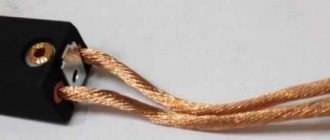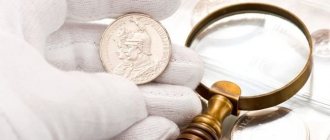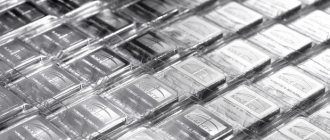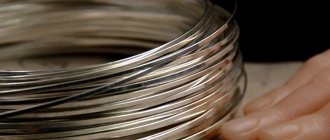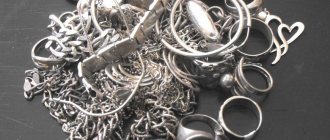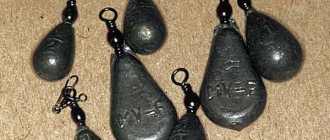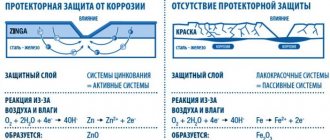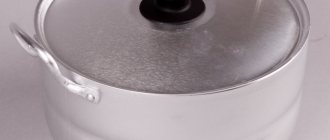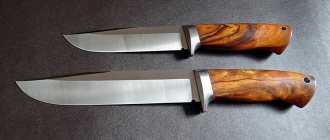How to make a mixture for a neutral type ceramic crucible?
First you need to prepare the form of a homemade crucible for melting lead.
This is done according to the following algorithm: Dry clay is mixed with ground fireclay until a homogeneous consistency is obtained. It is recommended to make 20 revolutions in the fireclay mill.
- As soon as the required state is achieved, you can unload the mass and begin mixing by hand, adding water little by little. The mixture, in the right condition, will form a lump and will not stick to the skin or leak through your fingers.
- Now you need to add silicate stationery glue.
- Mix the whole mass thoroughly. It is worth noting that this is the most difficult and time-consuming stage. Continue processing until a homogeneous consistency is obtained.
- The next step in creating a crucible for melting lead with your own hands will be to remove air from the finished mixture. It is necessary to ensure that not a single bubble remains in it. Otherwise, the crucible will burst when overheated. To avoid this, the air must be knocked out.
- Spread a film on the hard floor (never use newspapers!).
- Now the fun begins. To eliminate all the air from the workpiece, it is necessary to throw it onto the film with maximum force. Do this until the bubbles stop coming out of the mass. After that, throw 10 more times (more is possible).
- After the procedure for removing air from the mixture has been completed, it can be stored. To keep it for as long as possible, you should use glass containers with a hermetically sealed lid.
Attention! Do not store the workpiece in a plastic container or wrapped in several layers of film. It will dry out in a couple of weeks and will be unusable!
Types of vessel
The types of this tool are divided according to the category of raw materials that need to be processed. At the moment, there are the following types of crucibles for melting lead:
- ceramic neutral type;
- ceramic graphite type;
- graphite;
- cast iron;
- steel.
Attention! The last three types are absolutely not suitable for use in an induction furnace. This is explained by their complete absorption of EMF energy.
Now you can proceed to the direct instructions for creating a crucible for melting lead with your own hands.
Crucible for melting metal - why not make it yourself?
Saturday, February 18, 2022 23:52 + to quote book
Many craftsmen make crucibles for melting metals with their own hands, they have perfected their technologies, and the quality of such products is quite good. If making a crucible with your own hands is a new thing for you, then this review will help you decide which path to take next: make the crucible yourself or buy it from a direct manufacturer without intermediaries.
Let's start with the fact that the materials for making a crucible with your own hands can be pieces of stainless steel pipes, cast iron, clay, fireclay chips, charcoal, graphite, etc. It would seem that the materials are cheap, the cost of a homemade crucible should also be low. However, in practice, when making a high-quality and cheap crucible at home, craftsmen are faced with a number of problems. In this review we will not dwell on graphite crucibles and their burnout problems when melting metals. Here we will dwell in more detail on the problems of making ceramic crucibles with our own hands. I will describe the most common of them:
- The main problem is the heterogeneous composition of the clay masses. Different clay deposits are characterized by different compositions, and in order to obtain high-quality ceramic products, clays of a certain qualitative and quantitative composition are required.
- Clays used to make ceramic crucibles shrink; different clays shrink differently. If you prepare crucibles in large batches and purchase one type of clay in large quantities, then this is not a problem. The shrinkage of the clay is calculated in advance, and the finished product is obtained in a given shape and the variation in overall dimensions is extremely small. But if ceramic crucibles are made from case to case, different batches of clay are used, then maintaining the required dimensions turns out to be problematic, and the percentage of defects increases.
- Homemade ceramic crucibles can withstand a small amount of melting; when using sodium tetraborate (borax), homemade ceramic crucibles quickly become covered with microcracks and become unsuitable for further melting of metal.
- Homemade crucibles are often not sufficiently dried, which is why, when the metal melts, additional stress appears in the body of the crucible and the crucible bursts.
- Homemade ceramic crucibles are thick-walled and require more heating time; energy consumption increases when melting metal.
The best option for melting most metals is a ceramic crucible, but not every ceramic crucible is suitable for melting metal. Let's consider this issue in more detail. Let's start with the fact that ceramic crucibles, which are most often found on the Russian market, are divided into porcelain, corundum and quartz ceramic crucibles. Porcelain crucibles are not suitable for melting many metals due to their relatively low fire resistance
Corundum crucibles are fire-resistant and durable, but when melting metal there is one very important limitation: the corundum crucible cannot be sharply heated and cooled, the cooling rate of the corundum crucible is 2-3 ° C/minute. For melting metal under changing temperatures, a crucible made of sintered quartz ceramics is suitable.
Making crucibles
Now it's time to make your own melting crucible. From the above it is clear that it makes sense to make crucibles with your own hands:
- Steel;
- Ceramic neutral;
- Ceramic graphite.
There is nothing special to say about steel crucibles - they are just a steel vessel with a welded handle. Steel crucibles are used for melting low-melting metals; sometimes - zinc for hot galvanizing with quality up to 3+. Steel crucibles for lead, tin and zinc are only suitable for melting one specific metal, because... after 1-2 melts they themselves are covered with it from the inside.
How to make a graphite crucible
Capacity of this category has many advantages:
- low overall weight;
- resistance to hot alloys;
- good thermal conductivity;
- strength increases with increasing temperature.
If you take the easy route, you can take a graphite rod, and the crucible is almost ready. All that remains is to attach the bottom.
Graphite crucibles in various sizes
If the required tube is not found, everything can be done using two molds of different sizes, which are inserted one into the other, and the free space will allow you to give the desired dimensions. Initially, you need to pour the mortar into an empty container, and you should not spare it. The fact is that the powder will compact and settle. Next, add liquid glass (about 15 ml) and mix everything thoroughly. It is recommended to place the mixed mass in a large cylindrical container (you can use a plastic cup) and press a hole into a small one, leaving the bottom thick enough.
As a result, a vessel will come out, which is given time to dry. In this case, heat treatment will also be required to remove excess liquid. If all the steps were correct, then you will have a high-quality graphite crucible, made by yourself.
Other metal remelting methods
- A significant amount of lunar metal can be smelted using a blowtorch. Accordingly, the work equipment (crucible with charge) will have to be placed in a fireclay clay pipe of larger diameter and wall thickness.
- At home, you can melt silver using an ordinary microwave oven, using a stand made of asbestos or other temperature-resistant material.
- To melt metal, you can use a special melting furnace, which you can purchase or build yourself. It is better to install homemade or factory-made installations separately in a garage or country house.
To melt metals, special heat-resistant bowls called crucibles are used. They are very popular in jewelry workshops, laboratories and the metallurgical industry. But for a full-fledged process, it is not enough to acquire a simple object with a heat-resistant surface, because different iron requires its own product, which must correspond to the chemical composition and be suitable for a specific temperature regime. These facilities also produce a finished alloy, which remains to be given the correct shape.
Crucible furnace structure
An induction melting furnace consists of a frame, an inductor, a heating chamber, a tilting mechanism, and a vacuum system. The unit does not have a core; a cylindrical melting crucible is placed directly in the cavity of the inductor. The mixture of starting materials is melted in a crucible under the influence of electromagnetic energy. All components are enclosed in a casing - this frame provides structural rigidity and prevents power dissipation.
Appearance of induction melting furnace
Simpler are the designs of crucible furnaces operating on the basis of solid fuel, for example, charcoal - they are easier to make with your own hands from scrap materials. The metal cylinder body is reinforced with a fireproof layer of concrete or fireclay clay with sand. Fuel is subsequently placed into this shaft. Place a crucible on top, for example, a teapot, a tin can with thick walls, or any strong stainless steel container.
In the lower sector of the shaft there is a hole intended for air supply, and a lattice base is also located here. These elements allow you to maintain the combustion process and change the temperature. Excess air is removed through the damper. For injection, a vacuum cleaner pipe or a hair dryer is usually used.
Crucible furnaces, designed for simultaneous melting of more than 10 kg of aluminum, are equipped with a lid so that the metal is heated evenly. All elements of primitive models are made of cast iron or steel - these materials do not deform when heated in artisanal conditions.
Other metal remelting methods
- A significant amount of lunar metal can be smelted using a blowtorch. Accordingly, the work equipment (crucible with charge) will have to be placed in a fireclay clay pipe of larger diameter and wall thickness.
- At home, you can melt silver using an ordinary microwave oven, using a stand made of asbestos or other temperature-resistant material.
- To melt metal, you can use a special melting furnace, which you can purchase or build yourself. It is better to install homemade or factory-made installations separately in a garage or country house.
How to melt silver at home using simple tools and materials?
Step-by-step instructions for melting copper
Copper smelting, if you prepare everything necessary for the implementation of such a technological process and approach its implementation correctly, allows you to produce copper products for both decorative and purely practical purposes even at home.
To melt copper, you will need the following tools, equipment and supplies:
- muffle furnace (preferably with adjustable heating temperature);
- a crucible in which you will melt copper (for melting copper, crucibles made of ceramics or refractory clay are used);
- tongs with which the hot crucible will be removed from the furnace;
- hook (it can be made from ordinary steel wire);
- household vacuum cleaner;
- charcoal;
- the mold into which the casting will be performed;
- gas burner and forge.
Electrical copper contains the least amount of impurities
The crushed copper is placed in a crucible. Keep in mind: the smaller the pieces of metal, the faster it will melt. After filling the crucible with copper, it is placed in a furnace, which, using a temperature regulator, must be heated to the required state. The doors of serial muffle furnaces must have a window through which you can observe the melting process.
The viewing window will allow you to control the process without opening the door again, thereby not reducing the temperature in the oven
After all the copper in the crucible has melted, it must be removed from the furnace using special tongs. There is always an oxide film on the surface of the molten copper, which must be moved to one of the walls of the crucible using a steel hook. After freeing its surface from the oxide film, the molten metal should be poured as quickly and carefully as possible into a pre-prepared mold. The details and rules for performing this procedure are well demonstrated in a video that is easy to find on the Internet.
You will have to pour the metal into molds very quickly if the heating method you chose could not provide the desired temperature
If you do not have a muffle furnace at your disposal, you can heat the crucible with copper using a gas burner, placing it vertically under the bottom of the container
In this case, it is important to ensure that the flame of the gas burner is evenly distributed over the entire area of the bottom of the crucible
If at home you need to melt low-melting alloys based on copper (brass and some brands of bronze), then you can use a regular blowtorch as a heating device, also placing it vertically under the bottom of the crucible. When melting is performed using this and the previous methods, the surface of the molten metal will actively interact with oxygen, which will lead to intense oxidation. To reduce the intensity of oxidation, molten copper can be sprinkled with crushed charcoal.
Melting copper with a blowtorch in a homemade stove
If you have a forge in your home workshop, it can also be used to melt copper, brass or bronze. In this case, a crucible with crushed metal is placed on a layer of hot charcoal. To make the heating and melting process more intense, air can be supplied to the coal combustion zone, for which a regular vacuum cleaner that works not to draw in, but to blow out is suitable. If you use a vacuum cleaner, you need to make a metal tip with a small diameter blowing hole on its hose.
The smelting process will be even more efficient in a gas furnace
When selecting a muffle furnace for performing foundry operations with copper and its alloys, you should pay attention to the temperature conditions that such a device can provide. Depending on the type of metal being melted, such a furnace must provide the following heating temperatures:
- copper – 1083°;
- various grades of bronze – 930–1140°;
- brass – 880–950°.
It is possible that you will decide to make a smelting furnace yourself after watching the video.
Ordinary copper, which does not contain any alloying additives in its chemical composition, does not have good fluidity in the molten state, therefore it is not suitable for the manufacture of casting products of complex configurations and small sizes. For these purposes, it is best to use brass, and choose an alloy whose surface color is lighter (this indicates that brass of this brand has a lower melting point).
Characteristics of copper
Copper is one of the first metals that man learned to mine and process. Products made of copper and its alloys were used as early as the 3rd century BC, as evidenced by historical data and the results of archaeological excavations. The widespread use of copper has largely been facilitated by the fact that it can be quite easily processed by various mechanical methods. In addition, it can be easily melted.
Copper, the surface of which has a distinct yellowish-red color, due to its softness, can easily be processed by plastic deformation. When the surface of copper interacts with the surrounding air, it becomes covered with an oxide film, which gives it such a beautiful color.
Grades of technical copper and their chemical composition
The characteristics of copper, such as electrical and thermal conductivity, are also of great importance, for which it ranks second among all metals, second only to silver. Due to these properties, products made from it are actively used in the electrical industry, as well as in cases where it is necessary to ensure rapid heat removal from a heated object.
Another important parameter of copper, which directly affects the amount of energy and labor consumed in the production of products from it, is the melting point. For pure copper, the temperature at which the metal changes from solid to liquid is 1083°. If you mix copper with tin and get bronze, then the melting point of such an alloy will already be 930–1140°, depending on the content of the main alloying additive in it. A copper alloy such as brass, which is obtained by adding zinc to the base metal, has an even lower melting point, which is in the range of 900–1050°.
Electrical properties of copper at a temperature of 20°
If you decide to implement a technological process such as copper casting at home, it is important to know one more parameter - its boiling point. At 2560° copper begins to literally boil, which is clearly visible in the video of this process
The appearance of bubbles on the surface of the liquid metal and active gas formation in it is facilitated by carbon released from copper as a result of its oxidation, which occurs during strong heating.
If the smelting technology is followed, shallow pores may remain on the surface of the copper ingot, which can be easily removed by grinding
Making a crucible from clay
You can make a crucible from fireclay clay. This is an inexpensive option and also highly resistant to high temperatures. This clay is used for laying stoves and can be purchased at any hardware store. Fireclay clay can withstand temperatures up to 1600 degrees Celsius.
So, you will need fireclay clay (sold in bags in hardware stores), liquid glass (sold there) and ground fireclay. It can be bought or made from fireclay bricks.
In order to make a mixture from which a crucible will be fashioned in the future, take 7 parts of clay, 3 parts of fireclay and 10 tablespoons of liquid glass per liter of dry mixture. Fireclay and clay are mixed until smooth. After this, water is slowly added. In order not to spoil the workpiece, you can pour out part of the mixture, and if there is a large amount of water, add dry powder. You need to knead until the clay stops sticking to your hands.
Only after the clay of the desired consistency has been mixed can glass be added. When adding glass, you need to thoroughly knead everything until the clay stops cracking. It is best to add glass to a lump of clay and roll it into a roll, then fold it several times and repeat the procedure until it stops cracking. The material for the crucible is ready. Until the moment when it is used, it must be stored in several layers of cellophane.
There is clay, now to make a crucible you need to take a mold, the easiest way is to use a plaster mold. How to make such a form can be found on any website on plaster modeling. So, directly making the crucible.
Before you start sculpting, you need to knock all the air out of the clay; to do this, you can lay a newspaper on the floor and forcefully throw a lump on it several times, ten times will be enough. Now take a lump of clay and carefully press it into the bottom of the mold, after which the walls of the product are formed in small lumps. Their thickness can be controlled along the edge of the mold
It is very important to carefully press the clay into the mold so that no air cushions form there. After the crucible is molded, you need to make the inner surface smooth
To do this, just moisten the clay with water.
After this comes the moment of drying. The mold with clay is placed in a cardboard box and covered with a lid. After seven hours, all the water from the clay will evaporate and the shape of the future crucible will “shrink” a little, so getting it out of the mold is not particularly difficult. After this, the crucible continues to dry in the same box; as it dries, all defects will be eliminated by themselves and the pot will acquire a gray color. Sometimes small cracks may appear. They can be covered with wet clay. Next, the pots are fired at a temperature of 800 degrees in a muffle furnace. After firing, the crucible is ready for use.
Preparatory work for silver smelting
Lunar metal is one of the materials used to make various household items and jewelry. Often, worn-out and obsolete things want to be given a new look or remade.
To do this, you can simply melt them and make another product, using the services of a craftsman or in a home-made environment. Melting silver at home requires strict adherence to safety precautions and the sequence of the technological process.
The silver component can be extracted on an industrial scale using specially developed technologies related to ore enrichment. In order to melt a small amount of metal at home, it is enough to have a minimum set of equipment, including:
- metal spoon;
- asbestos;
- borax;
- burner;
- scales;
- scrap metal;
- graphite powder;
- microwave or muffle oven;
- fireclay clay.
Metal smelting involves a change in the state of aggregation associated with the transition from solid to liquid under the influence of a high temperature gradient.
At home, it is necessary to take into account that the molten material must be cooled. Therefore, before starting work, it is necessary to first make a mold for casting the product. The silver material that is melted is called charge.
If it is necessary to melt a large piece of material, it can be divided into small pieces using a tool.
Making a casting mold is an integral part of the preparatory work. To do this, it is necessary to make a metal box into which a mixture of gypsum and talc will be poured. It is first made from beeswax, which can be obtained from beekeepers. The model of the product is placed in a box and filled with the mixture. After the mass hardens, the mold is heated and the wax is completely melted out of it. Wax residues may cause defects on the product. During the heating process, remaining moisture evaporates from it. The mold is ready for low tide.
Making a clay crucible
Here you can’t do without fireclay clay, which is sold in any building materials store. It tolerates extreme thermal effects very well, is cheap and there are unlikely to be any problems finding it. As a last resort, you can make a crucible from crushed fireclay bricks. You will also have to buy liquid glass and mix all the ingredients for a homogeneous base. The proportions look something like this:
- 7 units of clay;
- 3 units of fireclay;
- 10 spoons of liquid glass.
Clay crucibles
All components are added in stages: clay and fireclay are mixed until smooth, and water is gradually added to them. The main goal is to create a mixture that will not stick to your hands. When the required consistency is obtained, glass is added and everything is thoroughly mixed. The main thing here is to bring the object to a state where the plane stops cracking. The mixture is ready, and for storage it is recommended to use thick cellophane, or wrap it in 7-10 layers of film.
The mixed material is applied inside the model, its depth and thickness are formed. It is better to create a semicircular bottom, which will give a greater effect during future melting of iron filings. Also, the substance must be pressed tightly against the model so that air does not form between the planes, and for greater convenience it is recommended to wet your hands with water.
Afterwards, the tank is sent for drying: it is placed in a container made of cardboard or plastic and placed in a dry place. A few hours will be enough to remove any remaining moisture. Also, the product will settle a little, and it will be easy to remove it from the mold. A refractory vessel made of fireclay bricks will be enough for a long time of use, however, the last point of creation should be the firing procedure in a furnace and at T = 800 °C. And the thing can be used for its intended purpose. For ease of use, you will need a crucible furnace, which you can make yourself. For simple installation, you can weld a structure from several pipes to form a cylinder. Usually it is fixed on two parallel posts so that it does not touch the ground. And here the thickness of the walls (minimum 5 mm) and the stability of the product are taken into account (it must easily withstand T = 1600 °C or more).
Features of Graphite Crucible
Graphite crucibles for melting non-ferrous metals have a fairly long service life. They resist oxidation, thermal and mechanical effects of the melt well. Crucibles are mainly used in conjunction with induction heating furnaces.
Graphite Crucible Induction Furnace
Graphite, as a material, has the following properties:
- heat resistance;
- fire resistance;
- high thermal conductivity;
- increasing strength characteristics when heated;
- low specific gravity;
- low porosity;
- prevention of oxidation;
- resistance to: corrosion;
- sticking;
- burnt.
Graphite crucibles are not made from pure graphite. To form the mixture, refractory clay (fireclay, alumina) and quartz sand are added to the graphite. Some of the clay can be replaced with kaolin. High-quality containers can easily carry a significant number of heats.
For steel melting, the composition of the charge mixture is selected according to the requirements for the purity and characteristics of the steel.
| Batch materials, % | Graphite | Alumina | Kaolin | Chamotte |
| Alloy type | ||||
| High strength steel | 54 | 35 | — | 10 |
| Medium hard steel | 40 | 38 | — | 22 |
| Razor steel | 12 | 40 | 40 | 8 |
| Quality steel (clean) | 3 | 87 | 10 | — |
| Copper | 8 | 67 | — | 25 |
| Brass, bronze | 12 | 50 | 13 | 25 |
| Gray cast iron | 53 | 43 | — | 4 |
| Modified cast iron | 50 | 40 | — | 10 |
For smelting copper and cast iron, Blaninger proposed the following proportions of crucible charges.
| Batch materials, % | Copper alloys | Cast iron | ||||
| A | B | C | D | E | F | |
| Graphite | 48 | 57,5 | 55 | 50 | 58 | 55 |
| Clay | 32 | 25,5 | 35 | 40 | 35 | 30 |
| Kaolin | 6 | 10,5 | 5 | — | — | 7 |
| Quartz sand | — | — | — | 5 | 7 | 8 |
| Chamotte | 14 | — | 5 | 5 | — | — |
| Silicon sand | — | 6,5 | — | — | — | — |
An important production indicator is the cost of finished products with given characteristics. Therefore, various types of graphite are used to make crucibles.
Grain graphite is not used. Lamellar or crushed into a small fraction is used. Large-lamellar graphite is fire-resistant, heat-resistant and has a high density. Fine-plate graphite (amorphous) is less resistant and the number of melts in it is much less. The strength characteristics of crucibles depend on the ash content of graphite.
Graphite crucibles for steels
Crucibles for steels are made of highly concentrated graphite, the content of which reaches 90%. But the presence of iron oxides should be kept to a minimum. When smelting copper, graphite is partially replaced by retort graphite or coke.
Recently, the following grades of graphite have found widespread use:
- EG2 – electrographite;
- GM – fine-grained graphite;
- MPG – isostatic graphite.
Electrographite
Electrographite EG2 differs from the graphite from which electrodes are made in that it has less porosity. This grade is recommended for re-melting or for melting with slag removal.
Fine-grained graphite
Fine-grained graphite GM is recommended for melting pure metals. Resistant to burning.
Isostatic graphite
Isostatic graphites PGMs have the best characteristics, and therefore high cost.
Heating methods
If you need to melt more than 150-200 g of metal at a time, then you will need to build a crucible furnace next to the crucible, otherwise it will be very difficult to achieve homogeneity of the melt and high quality casting. The exception is low-melting and easily recoverable lead: up to 20-30 kg of it can be melted at a time at home. A relative exception is zinc for hot galvanizing; its melt in a crucible without a furnace can be up to 2-2.5 kg, but borax must be sprinkled on top of it so that the surface of the melt is completely covered with its fluidized layer. Steel fasteners are thrown into the melt through a layer of borax.
The optimal method in all respects for heating the crucible in a furnace is with gas, pos. 1 in Fig., but a gas crucible furnace is a rather complex structure, although it can easily be made independently. The most suitable crucible for a gas furnace is a graphite ceramic crucible, because its material has fairly high thermal conductivity. If there are particularly high requirements for metal purity, it is better to use a neutral ceramic crucible. When lower for fusible metals - cast iron, as it conducts heat better and thereby saves fuel. Graphite crucibles are placed in a gas furnace only if strong reduction of old oxidized metal is required, and the danger of carburization is insignificant, for example, when melting silver extracted from the earth for refining
Methods for melting metal in a crucible
For low-melting metals, the electric crucible furnace, pos. 2; it may be the so-called ohmic (with heating by a nichrome spiral) or induction, with heating from an electromagnetic oscillation generator, see below. Only ceramic neutral or, to a limited extent, graphite crucibles are suitable for induction furnaces.
If the crucible contains more than 2-2.5 kg of metal, then according to safety rules the crucible furnace must be made tiltable (item 3), because and 1 kg of melt spilled on the floor is already a big disaster. On the contrary, it is preferable to heat metal in small jewelry crucibles without a furnace, directly with the flame of a burner, pos. 4. In this case, the crucible is held throughout the melting process with a special spring grip, pos. 5 and 6.
Note: silver and its alloys, as well as lead on sinkers, can be melted at home in quantities of up to 15-20 g, using instead of a crucible... a food-grade stainless steel spoon, see fig. on right. For safety, then it is necessary to make gaskets for the jaws of the vice with longitudinal cuts under the handle of the spoon. The flame is exclusively gas; gasoline can burn a spoon.
Electric heating
Ohmic crucible furnaces are mainly used for smelting lead or tin. For more refractory metals, they turn out to be uneconomical, but up to 20 kg of lead can be melted at a time in a home crucible electric furnace; how to make your own electric crucible for melting lead, see for example. video:
Video: electric crucible for melting lead
https://youtube.com/watch?v=NcqOpDRNhpM
Melting aluminum in a crucible turns out to be more profitable by induction due to its high electrical conductivity, but this trick no longer works with copper - its temperature and latent heat of fusion are much higher. With the induction melting method, the metal is heated by Foucault eddy currents, for which the crucible with it is placed in an EMF coil of thick copper wire, powered by alternating current from an electromagnetic oscillation generator. How to make a generator with your own hands for inductively heating small amounts of metal, for example, for trinkets, is described in other materials, or, for example, see next. video guide.
Video: DIY induction heating
Induction crucible furnace for aluminum melting
With an increase in the amount of melted metal, not only does the required power of the generator increase, but its optimal frequency also decreases, this affects the so-called. surface effect (skin effect) in metal. If 100-200 g of aluminum can be melted into EMF from any homemade generator for inductive heating, then installation of 1.5-2 kg of duralumin or magnesium alloy is already a solid structure, see fig. on right. If you intend to work with aluminum, then think carefully - is it worth building something like this? Wouldn't it be easier to use a mini gas furnace for melting small quantities of aluminum alloys, see for example. video clip
Crucible: purpose, principles of melting, manufacturing, options, diagrams
Author: Yuriy Fedorovich Kolesnikov, thermal power engineer*
© When using site materials (quotes, images), the source must be indicated.
Crucible is a vessel for melting metal. As a rule, conversion metal is melted in crucibles, i.e. already brought to the required degree of quality for casting into a mold or refining (deep purification from impurities). The general line of development of large-scale metallurgy is to reduce the number of processing steps, up to the release of conditioned metal directly from the melting furnace, but in industry crucible melting still retains significant importance, and in handicrafts and jewelry it dominates.
The crucible is not just a fairly heat-resistant vessel. Its chemical composition and design must correspond to the type of metal being melted and the melting mode. This article describes how to make a crucible with your own hands and what conditions it must satisfy for use at home or in a small workshop. For beginner metallurgists, you will first have to touch on the metal smelting process itself, because... The requirements for the crucible are determined mainly by its conditions.
Melting metal in a crucible at home
Making a clay crucible
Here you can’t do without fireclay clay, which is sold in any building materials store. It tolerates extreme thermal effects very well, is cheap and there are unlikely to be any problems finding it. As a last resort, you can make a crucible from crushed fireclay bricks. You will also have to buy liquid glass and mix all the ingredients for a homogeneous base. The proportions look something like this:
- 7 units of clay;
- 3 units of fireclay;
- 10 spoons of liquid glass.
Clay crucibles
All components are added in stages: clay and fireclay are mixed until smooth, and water is gradually added to them. The main goal is to create a mixture that will not stick to your hands. When the required consistency is obtained, glass is added and everything is thoroughly mixed. The main thing here is to bring the object to a state where the plane stops cracking. The mixture is ready, and for storage it is recommended to use thick cellophane, or wrap it in 7-10 layers of film.
The mixed material is applied inside the model, its depth and thickness are formed. It is better to create a semicircular bottom, which will give a greater effect during future melting of iron filings. Also, the substance must be pressed tightly against the model so that air does not form between the planes, and for greater convenience it is recommended to wet your hands with water.
Afterwards, the tank is sent for drying: it is placed in a container made of cardboard or plastic and placed in a dry place. A few hours will be enough to remove any remaining moisture. Also, the product will settle a little, and it will be easy to remove it from the mold. A refractory vessel made of fireclay bricks will be enough for a long time of use, however, the last point of creation should be the firing procedure in a furnace and at T = 800 °C. And the thing can be used for its intended purpose. For ease of use, you will need a crucible furnace, which you can make yourself. For simple installation, you can weld a structure from several pipes to form a cylinder. Usually it is fixed on two parallel posts so that it does not touch the ground. And here the thickness of the walls (minimum 5 mm) and the stability of the product are taken into account (it must easily withstand T = 1600 °C or more).
Preparatory work for silver smelting
Lunar metal is one of the materials used to make various household items and jewelry. Often, worn-out and obsolete things want to be given a new look or remade.
To do this, you can simply melt them and make another product, using the services of a craftsman or in a home-made environment. Melting silver at home requires strict adherence to safety precautions and the sequence of the technological process.
The silver component can be extracted on an industrial scale using specially developed technologies related to ore enrichment. In order to melt a small amount of metal at home, it is enough to have a minimum set of equipment, including:
- metal spoon;
- asbestos;
- borax;
- burner;
- scales;
- scrap metal;
- graphite powder;
- microwave or muffle oven;
- fireclay clay.
Metal smelting involves a change in the state of aggregation associated with the transition from solid to liquid under the influence of a high temperature gradient.
At home, it is necessary to take into account that the molten material must be cooled. Therefore, before starting work, it is necessary to first make a mold for casting the product. The silver material that is melted is called charge.
If it is necessary to melt a large piece of material, it can be divided into small pieces using a tool.
Making a casting mold is an integral part of the preparatory work. To do this, it is necessary to make a metal box into which a mixture of gypsum and talc will be poured. It is first made from beeswax, which can be obtained from beekeepers. The model of the product is placed in a box and filled with the mixture. After the mass hardens, the mold is heated and the wax is completely melted out of it. Wax residues may cause defects on the product. During the heating process, remaining moisture evaporates from it. The mold is ready for low tide.
Physical features of melting homogeneous metals
Brass is a multicomponent alloy based on copper and zinc. It may also contain some other components - tin, lead, iron, nickel, manganese. Copper acts as the main substance, while additional components improve the physical properties of the material (strength, elasticity, electrical conductivity, corrosion potential). Melting of single-component and multi-component alloys has many differences. Therefore, before considering the issue of melting brass, it is necessary to consider the features of melting a homogeneous metal based on copper.
In physics, smelting is a procedure in which a solid metal turns into a liquid state. To melt copper, it must be heated to a temperature of 1.085 degrees Celsius. Typically, heating is carried out with a small temperature increase (~1150 degrees), since in practice copper alloys with the addition of alloying substances are often used, which increases the melting point.
Heating at the chemical-physical level
- Copper atoms are in a solid state before heating. On a chemical level, this means that they form a strong crystal lattice that is resistant to deformation and retains its shape upon impact.
- When heated, the potential energy of copper atoms increases, which leads to a deterioration in the strength of the crystalline structure of the material. However, the material retains its hardness because the crystal lattice is not destroyed (although it becomes less dense).
- When the temperature reaches 1.085 degrees, the copper atoms receive an excess amount of energy, which causes the crystal lattice of the alloy to disintegrate. At the physical level, the alloy changes from a solid to a liquid state.
- Now several situations are possible. Let's consider the first situation. If the material continues to be heated, it will retain its liquid state. At a temperature of 2.567 degrees, copper goes into a gaseous state (that is, the liquid begins to boil). In metallurgy, evaporation of copper is very rarely performed, since it has no practical benefit.
- But another situation is also possible. If liquid copper is not heated after melting, then the liquid will gradually begin to cool. This will cause the material to return to a solid form. At the chemical level, the crystal lattice will re-form.
One simple conclusion can be drawn from these theoretical calculations. For one-component compositions, the crystallization temperature and melting temperature are the same. In practice, it is simple to regulate the melting procedure - you just need to reduce or increase the temperature of the fire. During work, it is also necessary to monitor the distribution of fire over the entire area of the metal object. If the temperature distribution is uneven, some components will be in a liquid state, while others will be in a solid state.
A little about melting
In a deep vacuum, the high-purity metal being melted can be heated exactly to the melting temperature or slightly higher, and kept at it for some time so that tiny, literally a few atoms, remains of crystallites melt. Then the metal can be allowed to cool slightly below its melting point - it will remain liquid, like a supersaturated solution without a seed crystal. If we now pour the metal, also in a vacuum, into a mold made of a chemically absolutely inert material, in which a seed crystal of the same metal is placed, then, observing all the subtleties of this technology, we will obtain a single-crystal casting with unique properties.
Read also: How to make a hole in plastic
In amateur conditions, vacuum melting, alas, is not feasible. In order to properly make a crucible for melting metal yourself, you need to take into account a number of features of melting in a non-inert chemical gas environment. The melted metal, firstly, interacts with air, causing part of it to be lost to the formation of oxide, which is especially important when melting scrap precious metals: at its melting temperature (1060 degrees Celsius), even gold noticeably oxidizes. To compensate to some extent for oxidation, the crucible must provide a reducing environment for the melt or be chemically inert if the metal is melted with a clean open flame, see below.
Secondly, so that the metal in the crucible does not freeze until it is brought to the casting mold, so that the remnants of the original crystallites do not spoil the casting, and the melt acquires sufficient fluidity, the metal in the crucible is overheated. For example, the melting point of zinc is 440 degrees, and its foundry temperature is 600. Aluminum, respectively, 660 and 800. Since overheating of the metal after melting takes some time, degassing of the melt also occurs at the same time, this is the third thing.
Recovery
In metallurgy, atomic carbon C, carbon monoxide CO (carbon monoxide) and hydrogen H are used as reducing agents. The latter is most often an accidental guest, because for this purpose it is too active and is absorbed by metals without forming chemical compounds with them in large quantities, which spoils the casting material. For example, solid platinum at room temperature can absorb up to 800 volumes of hydrogen. A platinum blank in a hydrogen atmosphere literally swells before our eyes, cracks and falls into pieces. If you take them out of the hydrogen chamber and heat them, hydrogen will be released back.
Note: in a similar way, but in smaller quantities, metals absorb/emit other gases, e.g. nitrogen. This is why degassing of the melt is required, see also below.
A noticeable proportion of hydrogen reduction occurs when heated by an open flame of a gas burner, upon its contact with a less heated surface. The metal does not deteriorate - the absorbed hydrogen is released and burned later in the smelting process. But, if the crucible material is also prone to gas absorption, it may crack and burst during melting; this must be kept in mind.
CO reduction is noticeable if the metal in the crucible is melted by the open flame of a liquid (gasoline, kerosene, diesel) burner, for the same reasons. Liquid fuel burns much slower than gas, and its afterburning zone extends several cm from the burner nozzle. Reduction with carbon monoxide is the cleanest from the point of view of the metal: it does not spoil the metal and does not produce by-products with a strong excess of the reducing agent. Therefore, CO reduction is widely used in metallurgy when smelting metal from ore, but no one has yet figured out how to make a crucible furnace (see below), in which oxidation compensation would be completely provided by CO.
Atomic carbon is a reducing agent energetic enough to compensate for oxidation. It is also not difficult to create a reducing environment in a crucible using C: it is enough to introduce free carbon in one or another allotropic modification into the composition of its material or make the entire crucible from a heat-resistant and mechanically sufficiently strong allotrope C; graphite is one of them. When reducing C, there is a danger of carburization of the melt, but graphite releases very little atomic carbon when heated. If you heat the metal in a graphite crucible with a gas flame, then the excess C will immediately find a more “tasty” H for it and the danger of carburization will be reduced to zero. And for other heating methods (see below), you can select the dimensions, configuration of the crucible and the addition of graphite to its material so that there is simply no excess C under any conceivable melting mode. This is a very valuable property of graphite, keep it in mind too.
Note: the coefficient of thermal expansion of TKR graphite is negative, which significantly compensates for the thermal expansion of the crucible, increases its durability and increases its service life. Also valuable quality.
Excerpt
So, it’s clear why the melt in the crucible needs to be overheated and held. Although metal casting is a completely different topic, it still needs to be mentioned here that the melt holding time should be observed quite accurately. Chemically pure metals are almost never used in practice, for example. gold 9999 wears out very quickly; The exception is electrical copper and zinc for galvanizing, the cleaner they are, the better. Most often they use the so-called. eutectic alloys; eg steel is a eutectic of iron and carbon, and duralumin is a complex eutectic of several components. If the melt is allowed to sit, the structure of the eutectic in the casting will change and the finished product will be spoiled. The holding time is especially critical for bronze and brass: they need to be cast immediately, as soon as the play of the melt in the crucible apparently changes and becomes calmer. Remember how the engineer Telegin in A. N. Tolstoy’s “Walking Through Torment” was worried that the bronze would not wear out?
Read also: Generator for heating pump
In relation to the manufacture of a homemade crucible, degassing of the melt during exposure is significant in that at this time it (the crucible) experiences significant dynamic loads from bubbles of released gases and/or the play of the melt itself. That is, make the crucible withstand a large amount of thermal deformation and, if recovery is required, a small amount. Its material must also be viscous enough to withstand shock waves from bursting bubbles and shocks from melt jets. It is this circumstance that explains the low durability and reliability of homemade graphite crucibles (see below).
General manufacturing steps
To begin with, the raw materials are prepared, and here everything depends on the model of the future tank. It is better to take components with a reserve, because the first thing is unlikely to work out. Also, for safety reasons, you should carry out production away from open fire, and choose a well-ventilated area.
The second stage is mixing the materials and giving the casting the necessary parameters. For these purposes, plaster molds are used. Creating the outlines is not difficult, and such information is easy to find on the Internet. Then a homogeneous material is pasted over the outer part of the model, forming a future homemade refractory crucible
It is also important to give it the required depth and thickness.
Clay crucible in the drying process
And the last step is the drying process: the workpiece is placed in a cardboard box and covered with a lid. This will allow the casting to dry and remove excess water from it. Sometimes heat treatment may be required, however, the important point is to control the annealing temperature and protect the skin of the hands and face. If the heat is too intense, the item will burst and there is a chance of severe burns. Detailed instructions on how to make a crucible yourself and at home will be described in the following chapters.
Assembling a cast iron crucible
This type is the worst, but sometimes it brings good benefits. All that is required is to place a cast iron glass of a smaller diameter in a metal bowl, and fill the free space with sand and clay.
DIY cast iron crucible
Next, everything is heated in the oven until the mixture melts and takes on the same type of substance. Afterwards, the cup will harden, and iron can be melted in it. This is basic information on how to make a crucible at home and at minimal cost.
Source
We melt silver at home
Melting of any material is the process of transition of a substance from one state to another. In our case, this is the transition of silver from a solid to a liquid state. This transition occurs under the influence of high temperature on the substance. Some metals can be smelted at home. This includes silver.
A small amount of silver can be melted even in the kitchen.
Metal characteristics and melting point
Silver is more than 6,000 years old, as evidenced by archaeological finds in Turkey, Egypt and Iran. The second name of the precious metal is lunar, because according to esotericists, it is this luminary that serves as his patron, and the color resembles the cold shine of the Moon. In the past, this noble metal was valued more than gold.
Silver is characterized by the following physical properties:
- density - 10.6 g/cm3;
- hardness - soft and ductile;
- fusibility - high;
- thermal conductivity is the highest;
- electrical conductivity is the highest;
- reflectivity - yes.
The melting point of silver is 750-760 degrees
Having decided to smelt silver yourself, you need to know the temperature at which the metal changes from a solid state to a liquid state. It depends on the amount of foreign impurities in the composition. If the silver alloy includes a small amount of alloys, then its melting point will not exceed 750-760 degrees. The raw materials used in smelting are called charge. It is heated according to certain rules, taking into account the technological process, as well as observing safety precautions.
